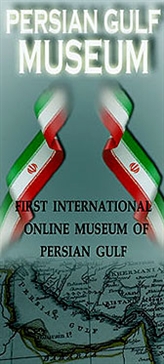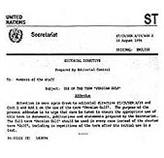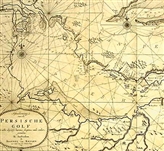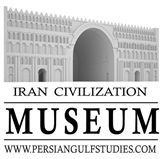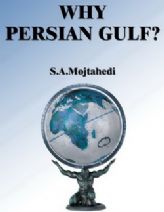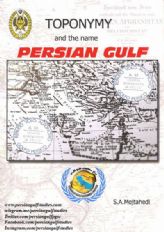Blocking the Strait of Hormuz and the Consequences for the United States of America
Date: 3/9/2014 11:15:02 AM
Blocking the Strait of Hormuz and the Consequences for the United States of America
Writer: Roozbeh Parsapoor
Translate by: yasaman gholami
Persian Gulf security and defense monthly
In recent years the pre-exiting challenge in US-Iranian relations has become vaster due to Iran’s developing nuclear activities. The US considers an international hegemonic right to itself, therefore, keeps the authority of manipulating all of other countries in the world. In the manifest international politics, all countries have nuclear rights but, experience suggests that in hidden policies, the US has taken a different strategy. In the Middle East, which is considered as the heart of the world’s energy, the US’s policy is defined as: nuclear rights should be only considered for those countries which are either completely dominated by the US, or be considered as its strategic ally, like: Pakistan, Israel, and Turkey. Otherwise they are not liable to such rights and should not attain such a scientific technology. As a country possessing potentials and superior defensive power in the Middle East, Islamic Republic of Iran’s policies disagree with such dominating wishes, and therefore, strategically confront the US. This disagreement in security policies has caused that the relationship of the two countries to change into opposition and finally possible encounter, from severance of political relations in 20 Farvardin 1359. Since 2001, the US, which has a background in anti-Iranism and intervening in the country’s internal affairs (the coup of 28 Mordad 1332 and overthrowing Mosadeq’s popular government, the shameful law of Capitulation, Iranian passenger plane crash in Persian Gulf, weaponry support for Iraq against Iran…) in order to accomplish this anti-Iran project, has edited and began a vast political and strategic restrictions against the Islamic republic. But these measures, having little effects on Iran, increase the possibility of leading the US to bombarding Iran’s nuclear centers; unaware of the fact that Iran has already considered this by not limiting the nuclear technology in its distinguished nuclear centers. Therefore attacking Iran’s nuclear establishments, in spite of all heavy economical losses, would not mean for Iran losing nuclear knowledge, technology and, industry; because Iran has always considered the chance military strikes from the US. So the extent of Iran’s nuclear knowledge, technology, and industry is not limited to the defined centers like Arak and Nathans, but the vastness of Iranian land that lowers the probability of attacking them. But yet, the Islamic Republic of Iran’s national defense doctrine considering such external threats and also the critical position of the Middle East codifies its general policies, with respect to the enemies’ threats, based on long term strategy of asymmetric wars out of Iranian borders and even inside of the aggressor country, and defends the country, which is every government’s obligation.
In the initial years of 21st century, the indexes of the Islamic Republic of Iran’s national security has changed, which is due to the transformation in the international system structure. Yet in these years transformation has been taking place in regional districts continuously. The dissolution of the bi-axial system and 11 September 2001 events can be considered as the reference points for the strategic changes and transformations in regional and international extents. Meanwhile and along with the above-mentioned changes, due to securing the region, in the Islamic Republic of Iran’s foreign policy some transformation has taken place to glorify Iran’s key role, more than ever, in the Middle East’s equations considering the country’s geopolitics and geostrategic. Meanwhile, the Islamic Republic of Iran is facing different threats in the region which some of these challenges include confronting deviated and satellite groups like: Jondollah, Monafeqin, Wahhabiun, Pan-Turkism, Al-Ahwazi, etc. but the main threat is the US which has made Iran the chief challenge of the great industrial powers(leading by the US) in the international arena. Iran’s response to confront such threats from countries like the US which its military budget is 700 billion dollars, equal with the military budget of more than 90 countries, and has far flung military force of 1445000 troop, (1)should possess clever and special features to be effective and maintain a deterrent role. Nevertheless, a country like the US with such military power still does not possess enough capability in leading irregular wars to confront Iran which is called the island of peace and stability (considering the experiences in Vietnam, Iraq, and Afghanistan); moreover, seeming legitimacy by public opinion can not be gained for such an aggression without the world’s great powers consensus. For this presumptive confrontation, the Islamic Republic’s national defense doctrine has considered several responses some of which include defending from within the country and some others are out of Iranian geographical borders. Some of Iran’s retorts would include bombarding Israel thoroughly, as one of the US states in the region. Some other responses would include bombarding and destroying all of the oil establishments of those Arab countries that had helped the US in this aggression, to cut the oil exports to the world. In case of military attack one of the Iran’s defense responses would be blocking the Strait of Hormuz. In this paper, we try to survey the consequences of blocking the Strait of Hormuz on the US economy and security. These items are only a part of the Islamic Republic of Iran’s clear response to any kind of aggression. Undoubtedly, there are some other concealed, security, and military responses which are known as Iran’s winner cards in any military encounter that would greatly shock all those countries which have participated in this aggression, against Iran.
Key Words: the Strait of Hormuz, Geostrategic, the Islamic Republic of Iran, security, the United States of America
Prelude
Straits are natural paths which interlink two bodies of water. Considering the importance and the role of the straits in communicative, political, military, and economical issues, since a long time ago they have been matters of regional and global dispute. For instance, some strategic straits like Bosporus and Dardanelles are run and controlled according to multilateral treaties. Some of traits are so important and influential that a law system was designate for them in 1958 convention. The Strait of Hormuz with a yearly traffic of 20000 sails is considered as one the most important international straits and is among the most vital straits in the world; because Persian Gulf is a half-closed sea which is of a special importance in the world’s energy equations. Consequently the Strait of Hormuz is like a key to enter this sea. There are more than 100 straits between several oceans and channels in the world which have the width of less than 40 km (25 miles). Based on the number of passing ships, being an economical axis, geographic vulnerability, military usage, and strategic importance, among these one hundred narrow channels only 5 of them are remarkable. Hormuz, Gibraltar, Bosporus, Dardanelles, and Bab-el-Mandeb maintain a special economical and political position in the world, because operate as the gates of Middle East and Northern Africa. Here the Strait of Hormuz maintains a special international security importance, because it is the most important oil transport pass in the world, and it seems that, in spite of all efforts made by the Arab countries on the margin of Persian Gulf on transporting their oil via other paths, this significance will be maintained in coming years. The Strait of Hormuz is a 600 miles wide channel and the only outlet of Persian Gulf. Iran’s six strategic islands in the entrance zone of Persian Gulf (Hormuz, Larak, Qeshm, Hengam, Greater Tunb, and Abu Musa) are located on a hypothetical defense curved line. This significant factor makes Iran a major player in Persian Gulf and affiliates the stable security of the Strait of Hormuz with the country. This strait separates the vast the Iranian plateau from the Saudi-Arabian desert peninsula and interlinks Persian Gulf to the sea of Oman and Indian Ocean. There is no defined scale to measure the length of the Strait of Hormuz; perhaps the best scale could be the defined Iran-Omani marine border with the length of 202.1km (124.8 marine miles).
The farthest distance in the Strait of Hormuz is 84km (from Bandar Abbas shore to the most northern point of Musandem shore in the south), the nearest is estimated 33.6km (between the Iranian island of Larak in the north and the island of Omani-al-Salami, which is called Big Queen, in the south). Based on the article 38 of marine law (1982) the channel of Hormuz is known an international strait that can interlink a part of an open sea and an economical district. The privilege of the passage of commercial ships, warships, submarines, and planes in this strategic extent is based on the interests of the countries located on its shores.(2)In fact according to article 39 of convention 1982, ships and submarines, passing international straits, should follow several principles. Some of them are”
1-passing without delay; in other words, contentiously and speedily
2- Forbidding the use of any kind of threat or force against the authority, political independence, and territorial integrity of the coastal countries of the strait
3-observing the rules of marine safety, among them the international rules of prevention of marine accidents, controlling marine pollution (3)
The significance of the passage of oil tankers through the Strait of Hormuz, which is like blood circulation in the vessels of North America, Western Europe, and some Asian countries like Japan and China, holds a special position in Iran’s security and defensive policy. Debates on blocking the Strait of Hormuz get serious only when the strait, which should be, based on the interests of the two riparian countries of Iran and Oman, a passage to international sails, on the contrary becomes a channel for the passage of the enemies and aggressors to Iran’s national interests. From the international law point of view, the country that has been attacked by another has the right of defending itself legitimately; to do so, it can apply military measures by any means. Nevertheless, the Islamic Republic of Iran’s authorities constantly emphasize that, as far as possible, they wouldn’t like to sabotage the passage of the world’s energy through the Strait of Hormuz, but in response to any kind of military attack, one of the Islamic Republic of Iran’s strategic aims, would be blocking the strait or shooting the passing sails of any kind, whether passing the strait or located in Persian Gulf. (4)Because as strategic managements experts believe (5) in the recent years invadieing Iran has been a top priority for the US; and their goals are: overthrowing the system, occupying the country, breaking off Iran into small satellite countries, occupying Iran’s oil resources, and the sovereignty of American and British colonels over Iran. Therefore, defensive preparedness for such a possible aggression is on the top of Iran’s programs. Undoubtedly, the consequence of this action would cause a spread international crisis, and consequently, many of the US’s allies like Persian Gulf council, Britain, and France would suffer heavy losses. The region’s high-leveled military experts, too, have emphasized a lot, that initiating the war against Iran, would have disastrous consequences, not only for the region but also for whole world.
